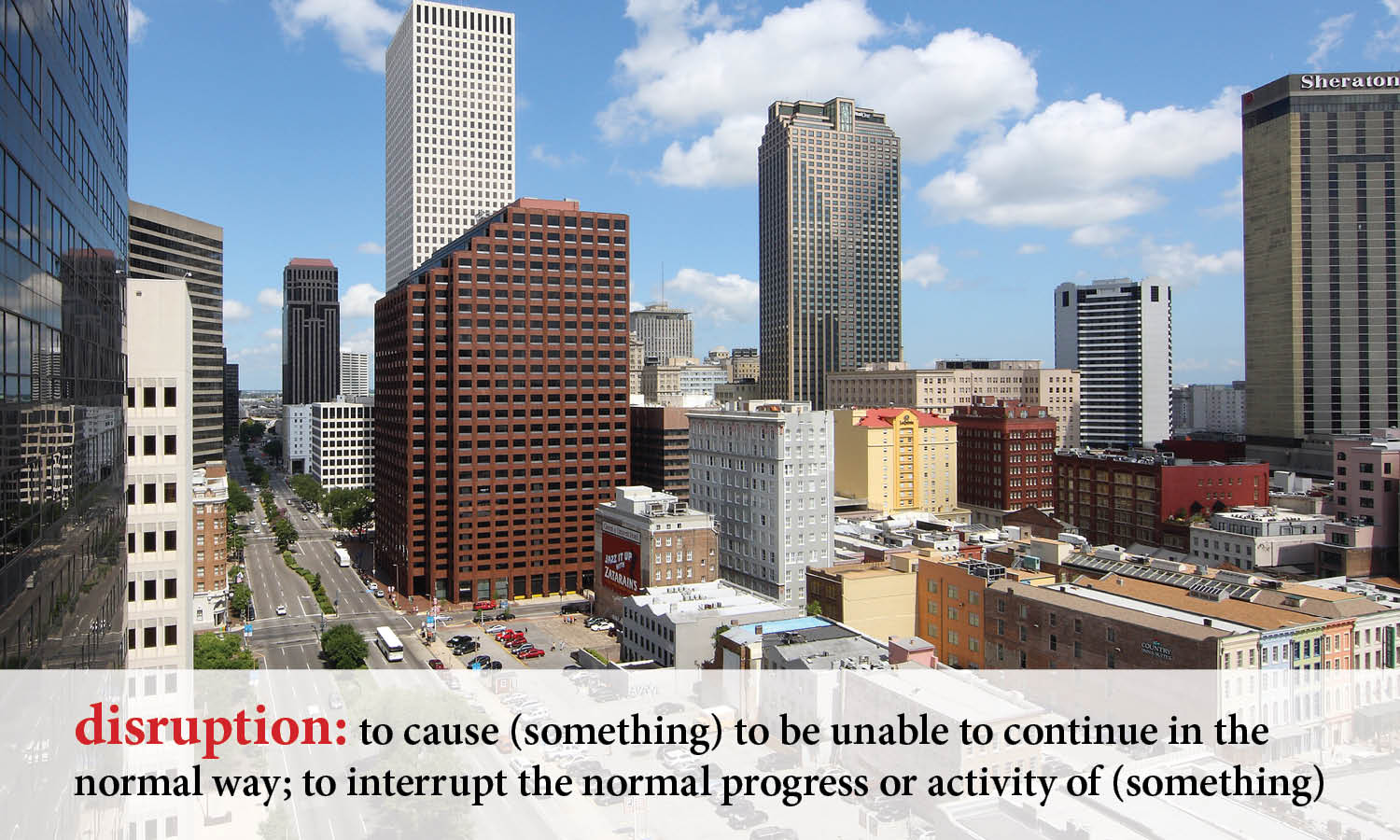Shreveport-Bossier City Retail Market Survey 2016
Stirling Properties is pleased to present the 2nd annual Shreveport-Bossier City Retail Market Survey. This report, compiled by Stacy Odom and Karen Hannigan, Broker Associates of our Shreveport office, is intended to give the reader a broad understanding of the market as well as specific information about the available square footage, occupancy and rental rates of each retail center greater than twenty thousand (20,000) square feet. It was created to be a resource for agents as well as tenants, landlords, developers, lenders, fellow brokers and anyone else looking for information about the Shreveport-Bossier City retail market.
All information provided in this report would not be possible without the cooperation of our staff and colleagues and we would like to thank all of those who contributed.
GNO, Inc. awarded the Mac Conway Award for Excellence in Economic Development by Site Selection Magazine
Site Selection Magazine awarded Greater New Orleans, Inc. (GNO, Inc.) the Mac Conway Award for Excellence in Economic Development. The Mac Conway Award for Excellence in Economic Development recognizes the top economic development agencies of the previous year in both metropolitan and micropolitan areas. The criteria used to select the recipients includes the total number of jobs created and the total amount invested as well as per capita investment and jobs created in the region. Site Selection also looks at unique ways economic development organizations are addressing critical issues in their communities.
A few of GNO, Inc. and the Greater New Orleans area successes:
- $4 billion in capital investments in 2015
- 1,988 new jobs created in 2015
- Knowledge industry jobs grew 37% in 2015
Congratulations to GNO Inc. for this prestigious and well- deserved honor! This award is yet another testament to the level of economic development, job creation and investment occurring in our 10-parish region.
GNO, Inc. was recognized along with 10 other groups in the nation. To see all the EDOs recognized, please read Site Selection’s article.
Women In Commercial Real Estate Are Making Progress!
Even though Women’s History Month has come to an end,
let’s not let the spotlight fade.
Last month, we celebrated Women’s History Month, an annual declaration that spotlights the contributions of women to events in history and our society. We reflected on the amazing accomplishments and resilience of the many women that paved the way for equality, especially in the workforce.
While we still have a great deal of ground to make up, I think it’s important to recognize how far women have progressed. Consider the recent advancement of Louisiana legislation aimed at closing the income gap and gender inequality. News headlines continue to cast a spotlight on gender barriers every day.
A recent comprehensive study commissioned by CREW (Commercial Real Estate Women) Network, 2015 Benchmark Study Report: Women in Commercial Real Estate, found that women in commercial real estate are more satisfied with their career progression than they were a decade ago, a substantial leap for our industry. The improvements included more women filling senior vice president, managing director and partner positions—even women starting their own real estate companies. Women in commercial real estate have achieved equal or close-to-equal standing as men in many aspects. (Read the full report HERE.) This information is a timely and welcomed example of some of the strides women are making.
Also, according to Womenable’s 2016 State of Women-Owned Businesses Report, the number of women-owned real estate firms has exceeded overall growth in the industry by an 11-point gap, and women-owned brokerages have also seen a nearly 30% increase in sales.
Women entrepreneurs are reaching historic achievements. On a national scale, the number of women-owned businesses has grown five times faster than the national average. From 2007 to 2016, the number of women-owned firms increased by 45%, and women started roughly 1,072 new businesses daily! There are now 11.3 million women-owned businesses across the nation, generating more than $1.6 trillion in revenue and employing nearly 9 million people.
The South has seen the greatest growth in women-owned businesses, with eight of the 10 fastest growing states in our region. Locally, the number of women-owned businesses in Louisiana has grown by 48.8% since 2007, ranking our state 10th nationally for growth of such industries. (For more statistics on women in the workforce, view the entire report HERE.)
It’s truly an exciting and rewarding time to be a business owner today. We’re breaking traditional gender molds and showing how women can be effective in leadership positions. Since 2010, Stirling Properties has achieved some of its greatest accomplishments, and I am proud to have played a role in that.
Today, Stirling Properties manages 16.4 million square feet of property, an increase of 50% since 2010. In addition, total gross revenue has increased by 140% and management fees are up 67%! Watch our complete Stirling Properties highlight video HERE.
I have had the pleasure of working in the real estate industry for more than 30 years, and am very involved in the community, as well as numerous nonprofit organizations and networking affiliations. I am one of the founding members of the New Orleans CREW organization and served as President and Board member for many years. I am familiar with the struggles women have faced in this industry, but also appreciate the headway that we have made.
More and more women are exceeding in the workplace, at home and in the community. Women across the Gulf South region are leading businesses and setting a standard of professional and personal excellence on a daily basis. The barriers are coming down. Industries—such as commercial real estate—that were once dominated by men are filling with talented ladies.
If you are interested in pursuing a real estate career, don’t shy away from the possibilities. Establish, strengthen and expand your professional networks. Organizations like CREW offer mentorship and networking functions. There are so many strong, smart, trailblazing women out there that we can look to as role models.
And never underestimate the resilience of women. Following Hurricanes Katrina and Rita, the New Orleans CREW affiliation lost more than half of its membership. But with the help of local commercial real estate businesses and national supporters, we were able to come back stronger than ever…and even increase our membership!
Support and comradery are crucial in any industry. Personally, I rely on my networking circles and business acquaintances often for support, and my affiliations have significantly contributed to my success. I encourage you to get involved. Grow a strong foundation. Lead the way for many more women to follow.
So even though Women’s History Month has come to an end, let’s not let the spotlight fade. As we turn the calendar page and welcome the spring season, let’s celebrate a time for opportunity and growth that will last throughout the year and beyond.
New Orleans: A City for Entrepreneurs
The “Big Three” cities for entrepreneurship—San Francisco/San Jose, Boston and New York—all have a high cost of living, which can be difficult on a startup budget. Resultantly, entrepreneurs are starting to look elsewhere.
Enter post-Katrina New Orleans. Hurricanes Katrina and Rita allowed one of America’s most historic places to reimage itself as a startup city and business destination. The Crescent City’s renaissance has attracted new entrepreneurial talent, boasting a business startup rate 64% higher than the national average.
Not only does New Orleans offer an affordable cost of living, it proposes attractive culture, world renowned food, and a vibrant art, music and entertainment scene. This fun-loving and diversity-embracing ethos attracts people from all over the world.
Furthermore, housing in San Francisco is 227% higher than in New Orleans, groceries cost 25% more, and transportation costs are 33% greater. Likewise, housing in New York is 368% higher, and Boston up 95%. It’s easy to see why New Orleans consistently ranks at the top for cities attracting college graduates in flocks.
New Orleans also recently made the ranks among ‘20 Hottest Startup Hubs in America,’ according to a report from Ewing Marion Kauffman Foundation. You can bet over the next few years, our resilient city will continue to top the lists of thriving marketplaces offering economic opportunities for entrepreneurs.
I could not agree more! We have already witnessed numerous companies—big and small—choosing New Orleans as home. The demand for office and industrial property has surged over the last few years. The city is ripe for opportunity and remains one of Stirling Properties’ most profitable areas for commercial real estate management, development and investment. We look forward to serving the growing commercial real estate needs of New Orleans for many years to come!
Read the entire article, What Makes New Orleans a Startup City to Rival the “Big Three”, by Harvard Business Review.
Alabama Historic Tax Credit Program
In 2013, the state of Alabama along with 33 other states, adopted a Historic Tax Credit program to help revitalize historic properties across the state. This tax credit program, when coupled with the federal Historic Tax Credits, can boost economic vitality in much needed areas as well as encourage development of nearby buildings. Thus far the program has awarded some $60 million in historic tax credits to support 39 qualified projects with a capital investment of close to $400 million. Further, for every $1 tax credit allocated approximately $3.90 is returned to state and local collections over a 20 year period.
The credits are set to expire in May and Lawmakers are debating whether to extend this program for another 7 years, a move which I fully support! Please reach out to your local congressman and urge them to support the extension of the state Historic Tax Credit.
To get all the facts and learn more about the properties that have benefited from the State Historic Tax Credit program, read John Sharp’s article on al.com.








